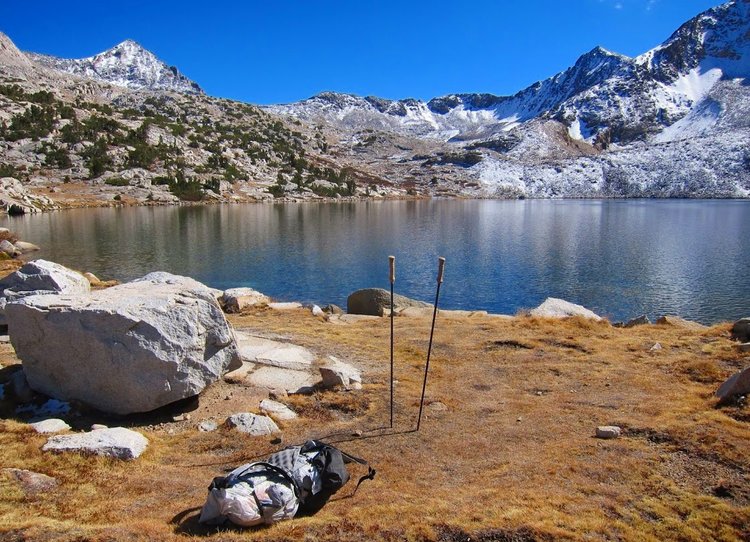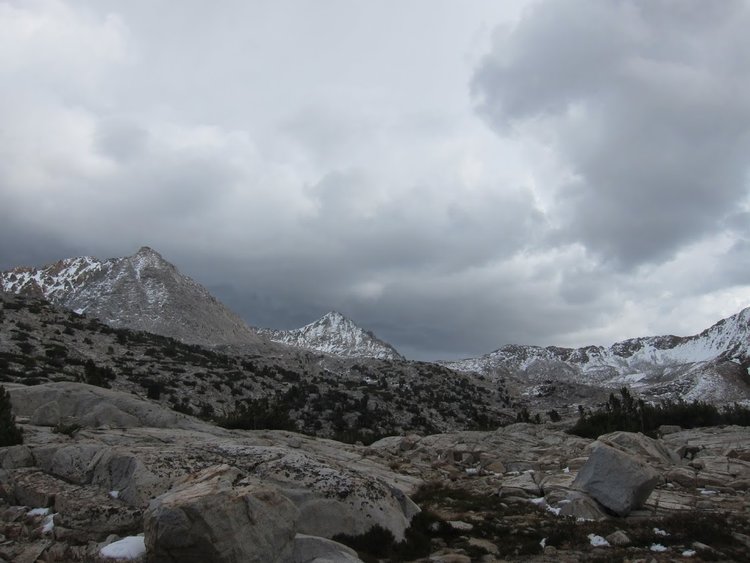Thanks Hobbes for the link to the article about Handy Andy and his FKT JMT hike. It's an impressive athletic achievement on any trail but I can relate to it more simply because I've been on each section of the trail and could almost feel his pain. I remember being equally impressed when I first read the article by Mike Lanza about hiking the JMT in 7 days (
http://www.backpacker.com/skills/ultral ... in-a-week/). The comments after his article seemed strange to me since many people criticized his focus on speed. . . but isn't that the point of FKT's? There's no point in trying to enjoy the 'wilderness experience' while hiking 60 miles/day!
I'm looking forward to seeing your new pack. I like the green(ish) color dyneema you used on your last pack. Perfect for the short 3 day trips in the southern Sierra. I'm not ready to ditch the hipbelt yet. I run hot and like to carry the pack slightly off my back for ventilation but I see other people doing it.
Thanks Rockyroad, I just got lucky on that rainbow panorama. It was one of those moments where I turned the corner and it was just there! If you're interested I have a few ultralight packs, quilts, pads etc that I've collected or built over the years and you are welcome to use/experiment with. Maybe we can take a short trip just to try it out sometime, possibly in the local mountains first just to play it safe.
Thanks for your diplomatic comments Markskor. I think describing it as 'slightly irresponsible' to focus on pack weight during the shoulder season without some sort of disclaimer is being very kind, however, in my experience it is possible to venture out into the High Sierra in the shoulder season with UL gear while still carrying adequate provisions and bad weather gear. This is based on UL meaning a base weight of 10 lbs or less.
I made the assumption that most people on HST are typically experienced and would already know this, but maybe in the future a disclaimer at the beginning of a post about a shoulder season trip would be reasonable. Possibly something like:
Do not try this if unless you have the experience and skills necessary to stay safe, comfortable and well fed under adverse conditions in the High Sierra. Always check the weather forecast before leaving, and be ready for the forecast to be incorrect. The high Sierra can create it's own weather, especially during a shoulder season trip like this. Hikers die every year in the High Sierra so if you are unsure, DO NOT go into the backcountry in the shoulder season.
Any input from the regulars here on HST would be humbly appreciated.
To illustrate how quickly the weather can change check out these two photos from a trip I took over Taboose Pass last week:
Bluebird skies at 1:00 pm during a rest at Lake Marjorie:

- Clear skies on the shore of Lake Marjorie at 1:00 pm last Thursday (10/22/15)
Surrounded by black clouds and thunder by 2:15 pm just below Pinchot Pass. Even though I had snow gear I turned around and sheltered up at lower elevation.

- Dark clouds and thunder at 2:00 pm just below Pinchot Pass.
Fortunately it blew through by sunset. This happened on a day when the forecast was for clear skies! My thoughts were about Larry Conn during this experience. I ended up hiking out a day early just to be safe.
For anyone new to HST you might find it interesting to read the memorial for Larry Conn who we lost in an October storm in 2012 at the top of Taboose Pass:
viewtopic.php?f=1&t=10155
Some thoughts about my own experience using lightweight gear during 5-10 day shoulder season trips;
In October 2013 I took a ten day trip that included Blackcap Basin - Lake Confusion Pass - Goddard Canyon - Ionian Basin - Finger Col (
http://seatosummitultralight.blogspot.c ... tober.html). The forecast was for a snow storm in the middle of the trip so I packed accordingly. My gear included a 10 degree quilt, full size inflatable pad, a pyramid shelter with 360 degree protection, puffy down jacket, full rain/snow gear, gloves and w/b rain/snow mitts, merino balaclava & headband, down beanie, stove for hot dinners etc.
My base pack weight was 8.3 pounds. I slept through an all night snow storm in Ionian Basin at the base of Mt. Goddard. While I do not recommend this to anyone new to backpacking I was safe, warm, well fed (and well rested) and enjoyed a beautiful trip solo.
I agree that it is irresponsible for someone who does not have the experience and skill necessary to use lightweight gear and techniques to venture out on a trip in the shoulder season.
I do not venture out into the High Sierra in the shoulder season without adequate provisions and/or adequate bad-weather gear and I do not use my same mid-summer gear during the shoulder season. Talking about lightweight gear can be fun, just like having fun talking about fishing gear. . . and I agree that talking about anything won't keep you alive.
If you are interested in the detailed breakdown of gear and food weights there was a detailed gear list included with the link in the original post and again below:
Some useful links:
Detailed UL gear list for this trip including a bear canister:
http://seatosummitultralight.blogspot.c ... -2015.html
Detailed UL gear list from 2013 ten day shoulder season trip:
http://seatosummitultralight.blogspot.c ... -2013.html
These are the weather forecast links that I check at least twice a day for the two weeks prior to a shoulder season trip in the Southern Sierra:
Current weather forecast for the Miter Basin/Crabtree Lakes area:
http://forecast.weather.gov/MapClick.ph ... 9278954356
Current snow level for the Cottonwood Lakes/Miter Basin/Crabtree areas:
http://www.nohrsc.noaa.gov/interactive/ ... &js=1&uc=0
The current NASA Worldview satellite view of the Southern Sierra:
http://go.nasa.gov/1S5sSRh
24 Hour Western U.S. Water Vapor (GOES West) map:
http://www.goes.noaa.gov/dml/west/nhem/weus/wv.html
High Sierra Topix Conditions Reports:
viewforum.php?f=34
Whitney Zone conditions:
http://www.whitneyzone.com/wz/ubbthread ... #Post44693
Thanks for reading and have fun:)
